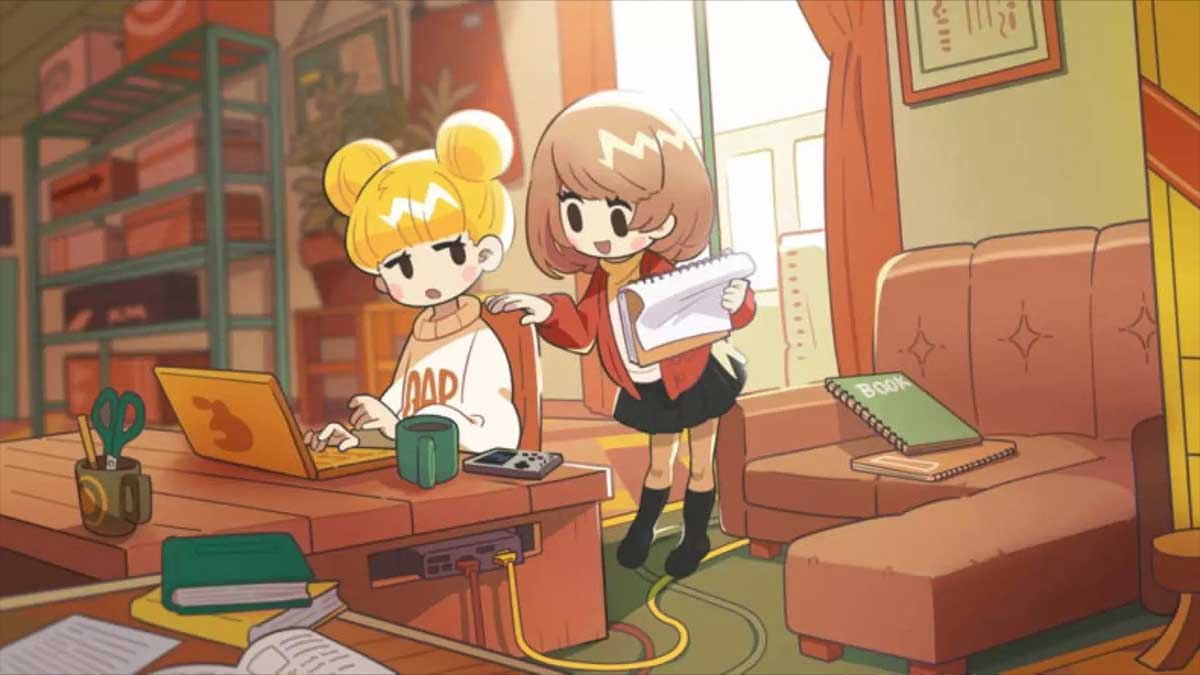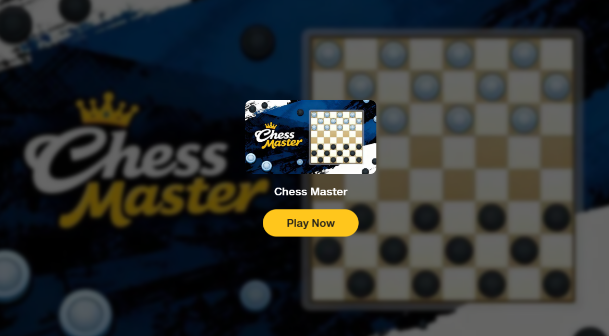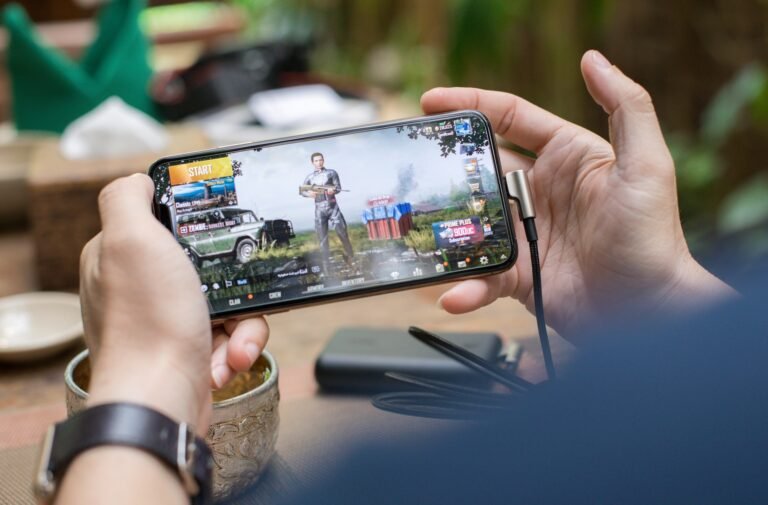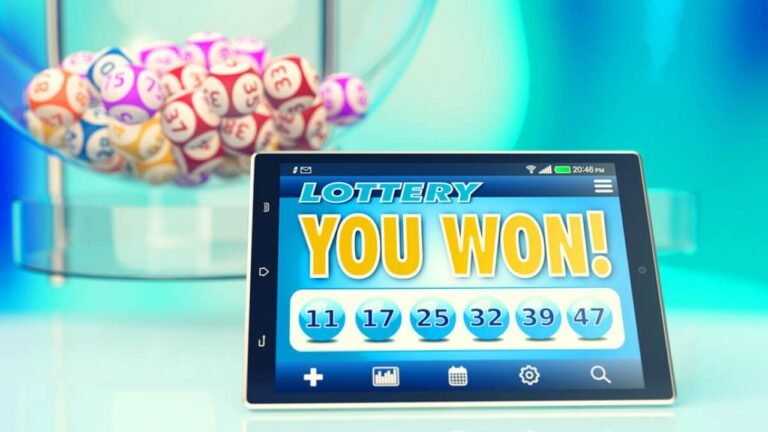
Nintendo
Play a video game where the protagonist creates games and then play her own game included in the video game as a mini-game. More or less.
Goodbye World is a Japanese indie narrative adventure first announced at Day of the Devs 2022.
Released on November 16, 2022 on Nintendo Switch and PC, the title produced by Isolation Studio and developed by YO FUJII shows itself to the public as a real video game within a video game.
The story tells the story of a young programmer grappling with all the difficulties deriving from the development of an independent video game: during the thirteen chapters of the story, the protagonist Kanii will meet Kumade, an equally young artist specializing in pixel art.
In parallel to the story, the player will have to navigate through the twelve levels of the game created by the two girls, a clear tribute to the very first Super Mario (you can retrieve the last chapter for Nintendo Switch on Amazon) played on a console that resembles in all respects all the old Game Boys produced by Nintendo in the early 90s.
Blocks, the platform adventure created by the two protagonists, also features some sounds that are reminiscent of Nintendo and the two consoles in all respects.
As always, let’s see everything in order in our review, where we explain what works – and what unfortunately really doesn’t – within Goodbye World.
Friendship, life stories and video games
Goodbye World talks about friendship, the hardships of young people in search of their own path, the sadness of those who cannot find their place in a world that is too chaotic and based on capitalism.
The official synopsis for the game reads:
“Programmer Kanii and graphic artist Kumade are two friends who met in college. After graduating they started making indie games together, but life has been tough so far. Their games don’t sell, and they spend most of their time working part-time to make ends meet. As Kanii desperately tries to find a way to make a product that she sells, Kumade makes a decision. “
Kanii is a shy, sometimes grumpy girl who struggles to form solid bonds with people. Although the game seems to be set in the early 90s, there is no mention that the dream of the two female protagonists is to make a video game.
In this sense, the game does an excellent job of stating that video games are certainly not a passion reserved for men, but rather that female gamers have always been there, since the birth of the first consoles and the first games.
To reinforce this idea is Kumade, Kanii’s new friend who is passionate about pixel art and a lover of old-time games. The two girls share the same nostalgia for the videogame works of the past, which they said offered a magical and unforgettable experience, difficult to find in modern titles.
Kanii’s dream is in fact to create a pixel art platform able to evoke her memories of her childhood, probably spent immersing herself in similar works.
Blocks, the work created by the two young women, is a game created with the intention of entertaining the player and taking him back to the golden age of video games, when the main objective of the developers was not only to sell and earn, but but to create immortal works capable of leaving a mark on people and history.
Although the idea behind the game is certainly interesting, Goodbye World struggles very hard to convey the desired message, which is lost between short dialogues not very incisive and between even shorter moments of gameplay, during which the player must try to overcome the complicated levels of Blocks.
Isolation Studio’s narrative adventure tries in every way to be a critique of the gaming industry, accused of creating video games with the sole purpose of earning and without ever taking into account the wishes of gamers.
The narrative focuses even more on Kanii’s inner discomforts, which due to her closed character and her rather stubborn nature does nothing but argue with anyone who tries to become part of her life.
At the same time, the issue of the difficulty of independent game designers to make a living creating video games is addressed, together with the never-ending dilemma: can video games be my only profession or do I have to look for a part-time job to survive and continue do what i love?
In our opinion, the work is decidedly too short to succeed in its intent to criticize the videogame industry, to delve into the inner discomforts of the protagonist and the difficulties of young people who approach the world of video games.
Most of the dialogues and reflections are printed on a black screen, a stylistic choice that has decidedly little impact and which fails to convey the desired messages.
It doesn’t matter if you win or lose
The gameplay of Goodbye World is practically non-existent. During the forty minutes of play, the player will not have to do anything but read the dialogues between the protagonist and the very few other characters presented.
The narration is often interrupted, somewhat abruptly and without a precise pattern, by the very short levels of Blocks, the videogame adventure created by Kanii and Kumade.
In this case, the protagonist is a small creature (a mouse? A dinosaur?) who can create and destroy obstacles (or, as the name suggests, blocks) in order to advance and defeat enemies.
Although the game may seem simplified by the possibility of stopping time while creating and moving blocks, in reality the levels of Blocks require a lot of precision to complete.
What makes everything particularly frustrating is the possibility, in the event of a game over, to try again to exceed the maximum level two or three times, depending on the moment of the game you are in.
Furthermore, the outcome of the 12 levels has absolutely no importance for the purposes of the game: on the second failure you find yourself catapulted out of Blocks and back into the narrative phase.
Blocks also offers a “try again” feature, useful in case the player has used blocks the wrong way and it is impossible to proceed.
Too bad there is no difference between failing the level and using this feature: in fact, if the player had already lost previously, using this option he will find himself in front of the “game over” screen.
Once the story is completed, the player will be able to select the “bonus” item from the main menu and replay all levels of Blocks.
However, even in this post-game phase the game proceeds in a rather frustrating way: in case of failure, it will be necessary to start from the first level and start over.
Also, during our run-on Nintendo Switch we attempted to replay Blocks a few days after completing the story and, for some reason, the “bonus” item in the main menu was no longer selectable.
Pixel Art and nostalgia
Goodbye World comes with graphics in perfect pixel art style, capable of recalling the old masterpieces of the late 80s / early 90s in just a few seconds.
Impossible not to think of the first Monkey Island, the very first Metal Gear of 1987 and many other works that over the years have helped to inflame the hearts of longtime gamers.
We can still find several fan-made tributes steeped in nostalgia for the past, such as Horizon Forbidden West in pixel art. With pastel colors and a setting inspired by the 90s, Goodbye World certainly succeeds in its intent to pay tribute to the greatest works of pixel art from the past. In short, from the point of view of the artistic direction, the choice is much appreciated – even if not very original.
Instead, Blocks, the game within the game, is nothing more than a 2D puzzle platfrom similar to the very first black and white Super Mario.







